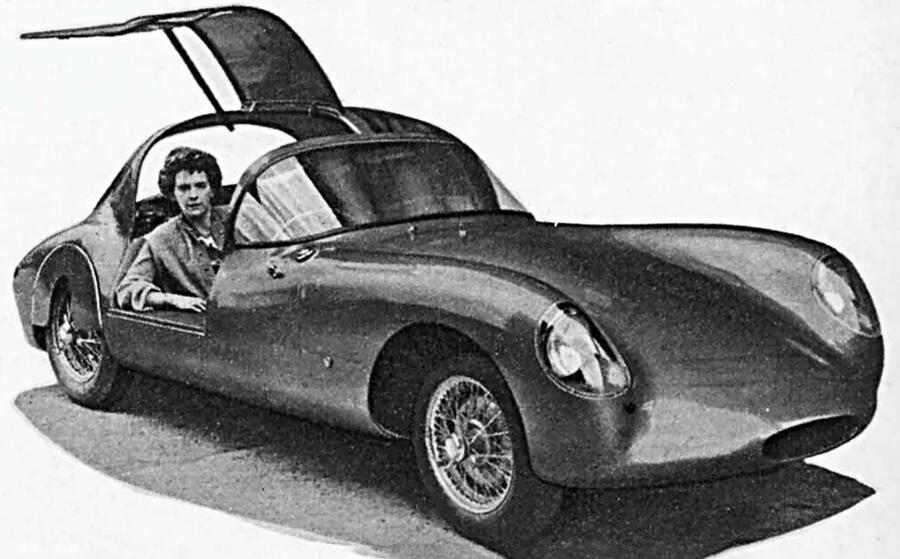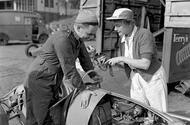Daphne Arnott’s company only lasted a decade, but its short existence is notable and possibly unique
Of all the many thousands of car makers that have ever existed, it seems probable that only one was created and operated by a woman.
Daphne Arnott’s eponymous company lasted for only a decade or so, but its short existence was an exciting and noteworthy one – and not just because of gender norms.
Arnott was born in 1926 to a father who was a third-generation automotive engineer and she was first exposed to motorsport at a young age, when he took her to Brooklands to watch a customer race using a supercharger of his.
She joined the London-based family business after a magazine publishing venture failed and became friendly with its general manager, wartime aircraft engineer George Thornton.
In 1951, the pair ventured to build a car for Formula 3, a new category for single-seaters powered by 500cc motorbike engines that had arisen from post-war austerity in Britain.
Autocar took notice when the little Arnott 500 “proved very fast†on its debut at Brands Hatch that October. It had independent suspension, partly donated by a Morris Minor, but most notable was Arnott’s focus on safety: it was the first F3 car with an integrated roll hoop and a seatbelt – not common even in Formula 1 for another 20 years.
When our sister title Classic & Sports Car caught up with Arnott in later years, she recalled: “Anyone who drove for the works team was required to use belts. Nobody was ever killed in one of our cars, and Dennis Taylor perhaps owes his life to our belts. He rolled a car at Brands Hatch but stayed in it, and when it landed on all four wheels, he continued. Had he been thrown out, he could have been seriously hurt.â€
Arnott had wanted to try racing herself but “at the time there were so many restrictions on women and I wanted to compete on equal terms with the men. Most of those ladies’ races were really for the girlfriends of drivers and mechanics, and I thought they were a bit sissy.â€
Naturally, her exploits caught the attention of London’s press. The Evening News wrote in 1952: “Arnott is a real mechanic. She is frequently to be seen in the pits changing a plug or helping in some other way, her white overalls grimy with grease, her blackened hands pushing carelessly through her blonde curls.†When asked if she had a romantic link to driver John Brise, she pointed to her car with a grin and said: “This is my boyfriend, and he takes up all my spare time.â€
Enjoy full access to the complete Autocar archive at the magazineshop.com
The paper met her again in 1953, as her team fielded another F3 first: a fibreglass body. It weighed a third as much as an aluminium one, and she emphasised: “We kicked it around the garage and jumped on it and it seemed to make no difference.â€
Meanwhile, Arnott had an eye on record-breaking, as DB, Kieft and Cooper set new 500cc bests at Montlhéry in quick order. So her team fabricated a streamlined body for the F3 car – and Brise broke no fewer than nine class records, for a fastest lap (122mph) and endurance.
Next came a road-going sports car: basically the F3 chassis clad in a fibreglass coupé body (praised by Autocar as “striking and beautifully finishedâ€) and powered by various British fours. At least six were sold.
Ever ambitious, Arnott decided to enter a car into the 1955 Le Mans 24 Hours (painted not British racing green but her favourite colour, red). The only available driver was young Peter Taylor, and Arnott later recalled: “As he passed the pits [during practice], he simply had to give his girlfriend a nonchalant wave.

That loss of concentration caused him to clip something, the car swerved across the track and piled into the Dunlop Bridge. He was unhurt, but when I saw him get out of the car unscathed, I wanted to run across and murder him.â€
It was a major blow, but Arnott’s team redoubled their efforts for a 1957 return with a bespoke coupé – and this time the innovation was, in our words, “quite the most complex suspensionâ€, the idea being that long rocker arms would afford more grip the faster the car was cornered.
It ran okay in the race – until the fifth hour, when its Climax engine uncharacteristically shed a valve.
And that was pretty much that. Arnott refocused on the family business, taking it over after her father died in 1961. Soon after she sold up and moved to Devon to run a guest house with her husband.Â
She took the 1955 Le Mans car with her, though, and it has since been restored to its former glory.


